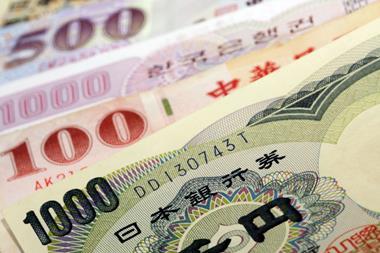PensionDanmark has dismissed the “explosion” in the issuance of green bonds as the dressing up of corporate issuance, as the fund increases its focus on energy production and distribution.
The DKK170bn (€23bn) Danish labour-market pension scheme said the term used collectively for green bonds was a difficult concept to grasp given its overlap with normal commercial issuance.
Speaking at the OECD Roundtable on Long-Term Investing in Paris last week, the scheme’s director, Jens-Christian Stougaard, said he was unconvinced by the latest growth in the market.
“Even when we are talking about the explosion, it is still a very small amount,” he said.
“We look at the ones that have been issued as corporate bonds – the term green bond is very difficult to grasp.”
Corporate bonds issued in the past by national energy provider DONG would now be classed as green bonds in today’s market, he added.
Issuance of green bonds has surged in recent years, with the total value of the market having grown from around $7bn (€5.6bn) in 2012 to more than $35bn in 2014, according to the Climate Bonds Initiative.
New issuance in 2014 is now more than $17bn compared with $10bn a year earlier.
“Green bonds are a very large spectrum,” Stougaard said. “Some are project specific, but there are different variations.
“It is very much a marketing thing and convenient thing to put around an issue. I am not sure if it adds capital to what is already going on.”
In exchange, Stougaard said the fund was continuing its exploration of offshore wind farms and renewable power plants.
Stougaard said demand for “greener” real assets was increasingly competitive, affecting pricing.
But he said PensionDanmark would continue to look at energy-grid investments as energy providers struggle to shrink balance sheets, providing good-value assets.
In February, the fund announced a DKK2.9bn investment into a power-grid for wind power in the North Sea.
Steve Waygood, chief responsible investment office at Aviva Investors, backed Stougaard’s analysis of the green bond market and said setting a standard for green bonds should become a regulatory issue.
“My problem with the issuance is whether it is additional,” he said. “Are the projects being funded ones that would have been funded anyway from a conventional bond? If they are and then being issued with a premium, then it is wrong.”
Christopher Kaminker, an economist with the OECD, said the rapid growth of the green bond industry was not as much of an issue as its composition – with an increasing amount from corporates.
“There are still sovereign supranational agencies, but there is more corporate issuance or labelled issuances ring-fenced for projects the corporate is involved in,” he said.
“What is really important is that we get to a place where the capital being raised is contributing to projects.”
He said the OECD would study how the market continued to grow, its composition and its overall contribution to a low-carbon economy.













No comments yet